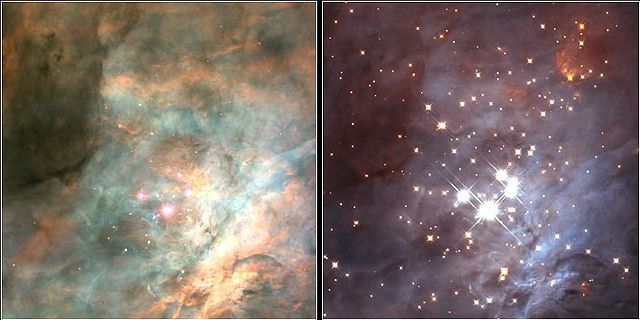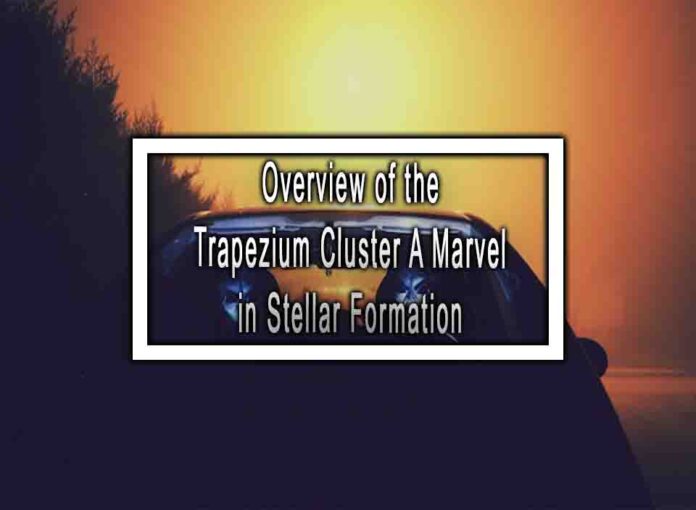The Trapezium Cluster is a remarkable group of young stars located in the heart of the Orion Nebula, a prominent region within the Orion Molecular Cloud Complex. This cluster is a marvel in the study of stellar formation and is rich in astrophysical insights. Here is an overview of the Trapezium Cluster and its significance in the context of stellar formation:
1. Location and Discovery:
- The Trapezium Cluster is situated within the Orion Nebula, which is part of the Orion Molecular Cloud Complex, a well-known region in the Orion constellation.
- The cluster is named after the Trapezium, a grouping of four bright, massive stars at its center.
- Its discovery and early studies can be traced back to astronomers such as Sir William Herschel and Charles Messier in the late 18th century.
2. Youth and Stellar Population:
- The Trapezium Cluster is exceptionally young, with an estimated age of only about 1 to 2 million years.
- It contains numerous stars, with a population ranging from a few hundred to over a thousand.
- These stars are still in the process of forming and are classified as part of the “Orion OB1 Association.”
3. Massive Stars and Ongoing Star Formation:
- The four massive stars in the Trapezium—Theta-1 Orionis A, B, C, and D—shine brightly and have masses significantly greater than that of our Sun.
- The intense radiation and stellar winds from these massive stars influence the surrounding region, creating a harsh environment that impacts nearby star formation.
- Despite the youth of the cluster, it’s already exhibiting signs of star formation still occurring within it, making it a unique laboratory for studying ongoing stellar birth processes.
4. Protoplanetary Disks and Planetary Formation:
- The Trapezium Cluster has been instrumental in the study of protoplanetary disks, which are flattened, rotating structures of gas and dust surrounding young stars.
- These disks are the birthplaces of planets, and the cluster provides an excellent opportunity to observe various stages of planetary formation.
- The Atacama Large Millimeter/submillimeter Array (ALMA) and other observatories have observed these disks, shedding light on the early stages of planetary systems.
5. Stellar Feedback and Orion Nebula:
- The massive stars in the Trapezium Cluster produce intense ultraviolet radiation and powerful stellar winds that have sculpted the surrounding gas and dust, creating the visually stunning Orion Nebula.
- This process, known as “stellar feedback,” plays a crucial role in regulating the star formation process and shaping the environment of young stellar clusters.
6. Scientific Significance:
- The Trapezium Cluster is a natural laboratory for the study of star formation, allowing astronomers to observe the entire lifecycle of stars, from their formation in molecular clouds to their emergence as mature stars.
- It also offers insights into the impact of massive stars on their surroundings, which has broader implications for understanding the evolution of galaxies.
In summary, the Trapezium Cluster within the Orion Nebula is a remarkable example of stellar formation in progress. Its youthful age, rich stellar population, and proximity to Earth make it a critical region for astronomers to study the processes of star and planetary formation. The cluster’s stunning visual appearance and scientific significance continue to captivate both researchers and stargazers alike.










